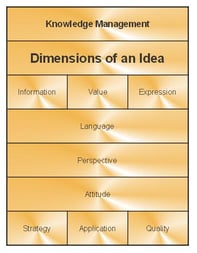Published on
Improvement Of Non-Traditional And Adult Student Teaching Processes

With an increase of non-traditional* and adult students** in the education system, beyond streamlined administrative and support services, how teaching is conducted is of primary importance for improved student, course and programmatic outcomes.
Malcolm Knowles clarified important distinctions between Pedagogy and Andragogy, pioneering the principles of adult education. These principles are at odds with an education system based on pedagogical methods that herald from monastic times, and remain the primary form of teaching.
Looking deeper, Knowles identified that adult students need a different learning process, which requires a different classroom culture from the one meted out to our youth. Adult students are independent, self-directed learners; responsible for their own learning versus youth learners who are dependent on the teacher for all learning and for evaluating whether learning has taken place.
Adults have accumulated life experiences that become a rich resource for learning, and add to the diversity of student groups and to individual self-identity. Youth do not have experience and thus depend on the experiences of their teacher for learning.
Adults are goal-oriented, want to attain, and appreciate organized, outcome-focused education. Youth are obligatory students in an authoritarian system with no influence over what is taught, how it is taught, who teaches it, or improvement.
Adult students are also relevancy-oriented, seeking to acquire knowledge relevant to their life or work, and therefore have the ability to assess gaps between where they are and where they want to be. Youth are expected to succeed in subject-based courses, and apply this information to some nebulously important, extrinsically defined, future application.
These distinctions framework effective teaching of non-traditional and adult learners is really about an environment of “pull” rather than “push”, about providing a humanistic approach to learning through empowerment and drawing learners out of unproductive comfort zones. Here, educators are facilitators, assisting learners in their quest to acquire useful knowledge, skill, and understanding. This means that teachers must be organized, skilled in leading participatory, respectful, learning environments, and adept at drawing out learners experiences as “scaffolding” to help individuals take on new concepts as a foundation for effective application in the real world.
This participatory learning environment is both a democratic lab and lecture hall, where learning is a shared responsibility, attitudes and opinions are honed, and questioning viewed as an opportunity to learn, just as Socrates taught us. It is a safe, collaborative microcosm of the real world, where adult learners prove they have mastered expected knowledge and skills, even as they gain a clearer picture of their role in achieving a better life.
This is not advocacy for the elimination of pedagogy, but a call to teach in alignment with learning outcomes, within an environment where student expectations are inculcated in the teaching process. Pedagogical methods are inclusive in a repertoire of appropriate teaching tools or methodologies requisite to successful student learning outcomes.
As an example, in the introductory phase of learning a new skill or topic, an “all eyes front” lecture approach can be very useful in establishing subject standards critical for successful learning outcomes. Yet during the lecture, breaks for discussion points, “pair-up’s” to report, and thus check, understanding, demonstrations to illustrate key points, are just some techniques to give students “skin in the game” responsibility, and improve learning retention. As the class progresses, transitioning into a participatory lab where students apply new knowledge and skill to solve real world scenario-based problems, with the teacher actively coaching to eliminate misconceptions and confirm knowledge standards and skill performance, boosts student confidence as they become self-reliant in their learning for career, or life, application.
An institution centered on providing a humanistic, useful, participatory, learning outcome focused education will better serve the needs of their non-traditional and adult student population. And as these students acquire knowledge and skill in their quest to improve their life, graduated summative outcomes serve as metrics for teaching, and organizational, effectiveness.
—-
Footnotes
* Although no clear definition exists, common characteristics of non-traditional students are generally expected to be, an undergraduate student in a 2 or 4 year college, over 25 years of age, usually attending part-time, have family and financial obligations
** Definitions of adult student range widely, from a student who is beyond mandatory school age having legally left elementary or secondary school to students returning to college after years away, may already be in a successful career and have a degree.
Author Perspective: Administrator



